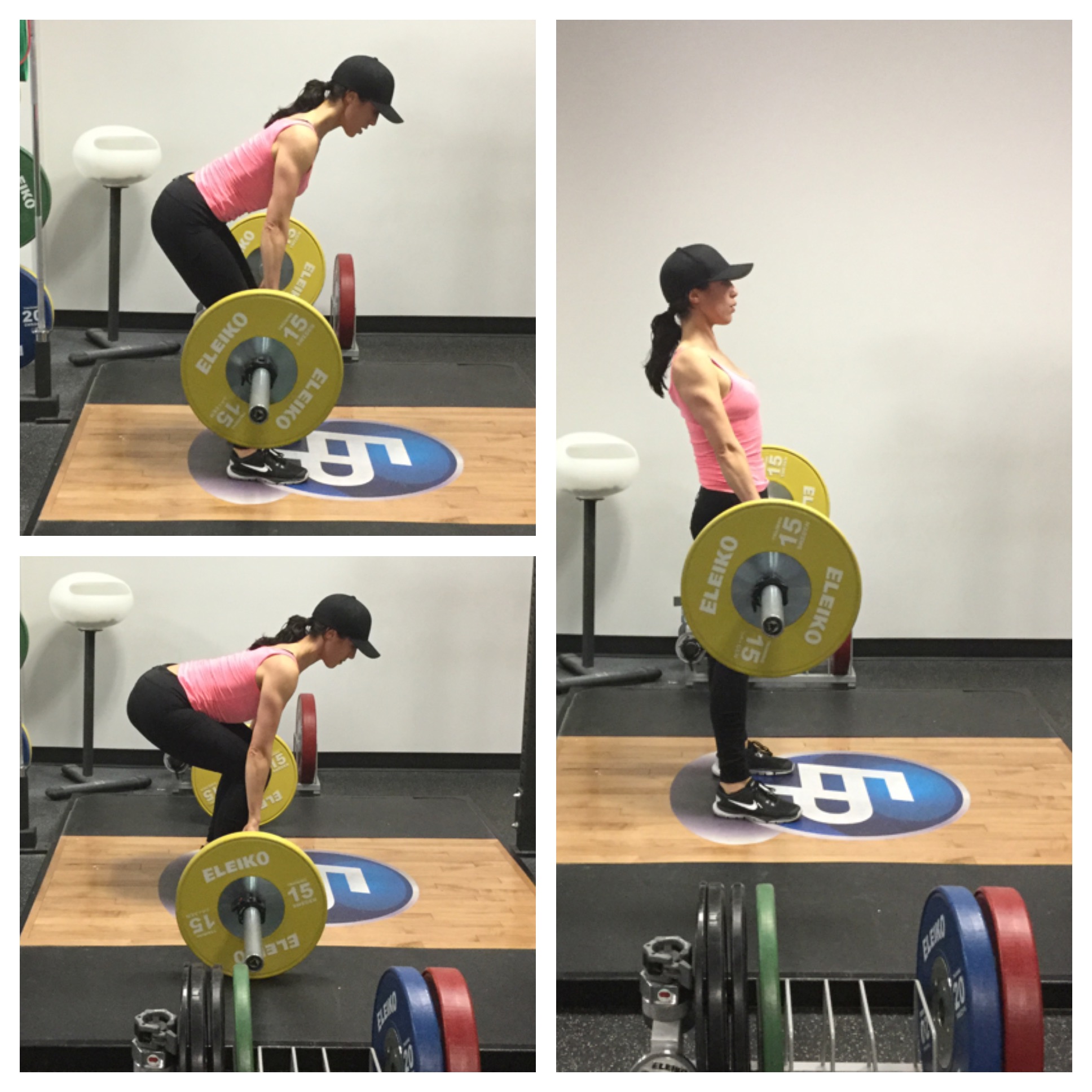If performed correctly the deadlift is without a doubt one of the most effective exercises for putting on mass and increasing total body strength. It puts an emphasis on the posterior chain (calves, hamstrings, glutes, spinal erectors) while teaching lifters how to properly hinge at the hips. Correct deadlifting also works to increase core stability (lower back, glutes, abdominals) leading to proper posture, balance and overall physical strength.
With that being said performing a deadlift incorrectly can lead to injury. In this post we take a look at a couple different variations, and how to perform them correctly.

The picture below shows bad form that is commonly seen. Notice the spine is flexed at the set-up position- meaning the back is rounded and shoulders are hunched towards the ears, and remains so until she comes back to the top of the exercise. This exposes some connective tissue of the spine to more stress than the average person can tolerate.
While many world class deadlifters lift with a flexed spine on maximal lifts, it is not an appropriate technique for the general population.
The Trap Bar Deadlift is an option for individuals who are new to deadlifting, have decreased strength, poor mobility, or for variety when regular deadlifts plateau.
Setup- Notice that the starting position is higher, making it appropriate for those with less flexibility
Start- the handle bars are placed beside the legs making it easier to maintain an upright neutral spine
The shorter range of motion makes this exercise less strenuous for beginners.
If you’re new to deadlifting you may want to begin with a lighter weight and gradually work your way up. It’s important to periodize or vary your load parameters over time by adjusting your reps, weights, sets and tempo.